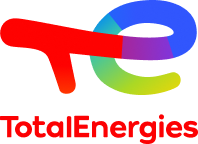L’irruption des renouvelables intermittentes dans les mix électriques : entre marché et politiques
Abstract
PROGRAMME
The Seminar on Research in Energy Economics at Paris-Sciences-Lettres (PSL) is jointly organized by the CERNA (MINES PARIS TECH), the CGEMP (Université Paris-Dauphine), the Chaire European Electricity Markets (Université Paris-Dauphine), and i3 (l’Institut interdisciplinaire de l’innovation), members of PSL. It is animated by François LEVEQUE (MINES PARIS TECH), Dominique FINON (Chaire European Electricity Markets, CNRS-CIRED) and Patrice GEOFFRON (Director, CGEMP, Université Paris-Dauphine).
Stefan Ambec, Directeur de Recherche INRA, chercheur à l’IDEI Toulouse
Decarbonizing electricity generation with intermittent sources of energy
Presentation
We examine the impact of public policies that aim to decarbonate electricity production by substituting fossil fuel energy with renewable sources that are intermittent such as wind or solar power. We consider a model of energy investment and production with two sources of energy: a clean intermittent one (e.g. wind), and a polluting reliable one (e.g. coal). We first characterize the first-best energy mix and its decentralization with a Pigouvian tax. Next we introduce several policy instruments. A carbon tax decreases electricity production while, at the same time, it increases investment in wind power. The tax may increase total production capacity since the retailing price of electricity does not depend on energy availability, windmill capacity must be backed-up with thermal power plants. Renewable portfolio standards (RES) and feed-in tariffs (FIT) enhance investment into intermittent sources of energy. However, they both might boost electricity production beyond the efficient level, in which case they must be complemented with a tax on electricity consumption. Lastly, we consider the case of a monopoly thermal power producer. We show that the introduction a competitive fringe of wind power producers makes the thermal power producer reduces further production capacity which increases electricity price. Two instruments are needed to implement the first-best: a price cap and a tax on fossil fuel.
TSE Working Paper, n° 15-603, September 2015, co-écrit avec Claude Crampes
Julien Jacqmin, HEC Management School / University of Liege, chercheur associé au LAMETA, Montpellier
Non-renewable and intermittent renewable energy sources: friends and foes?
Presentation
This paper studies the links between renewable and non-renewable intermittent energy sources in the production of electricity. More precisely, we argue that the relationship between the natural gas price and capacity investments in solar and wind power energy is far from univocal. We find that this relationship is not linear but is better represented by a bell-shaped curve. Hence, for relatively low gas price, the two modes of production are substitutable. After a price threshold is reached, the two are complementary. A theoretical model explains this as the trade-off resulting from two forces: the input price differential of these two modes of production and the risks related to the unpredictable nature of the intermittence of renewable energies. Using U.S. state level data from 1998 to 2012, we find that this relationship is robust to various empirical specifications.
Working Paper LAMETA n° 2014-09, co-écrit avec Edmond Baranes et Jean-Christophe Poudou





